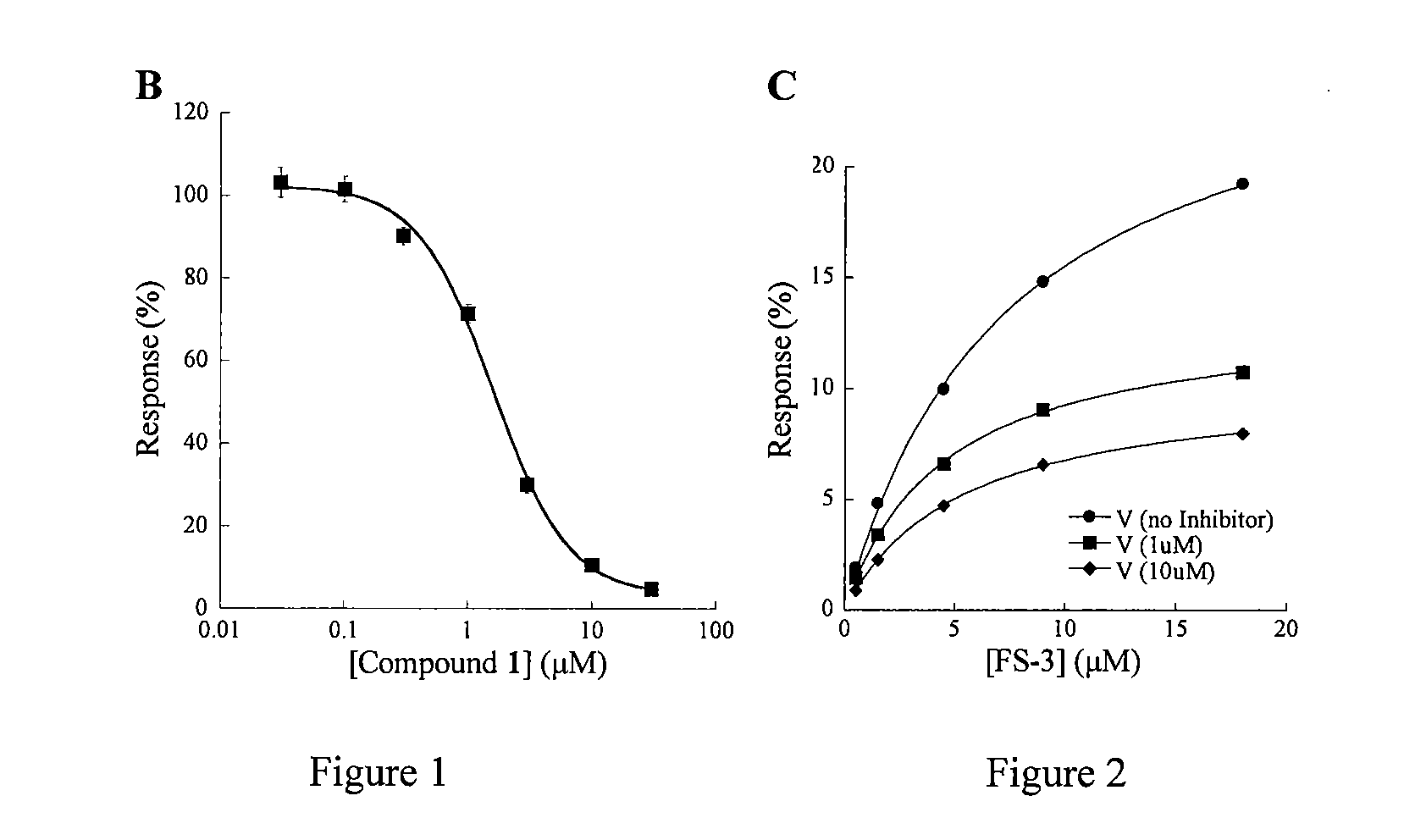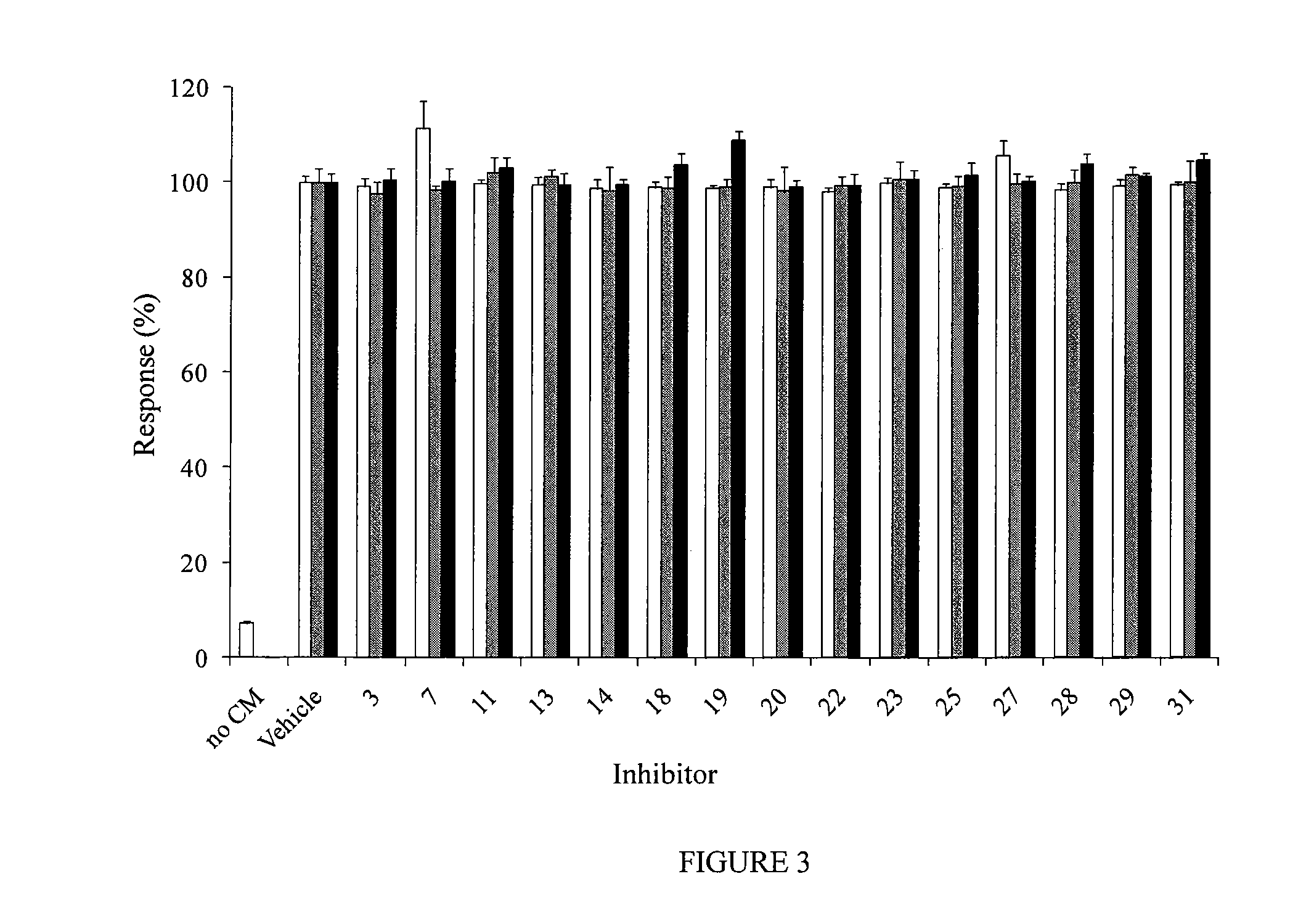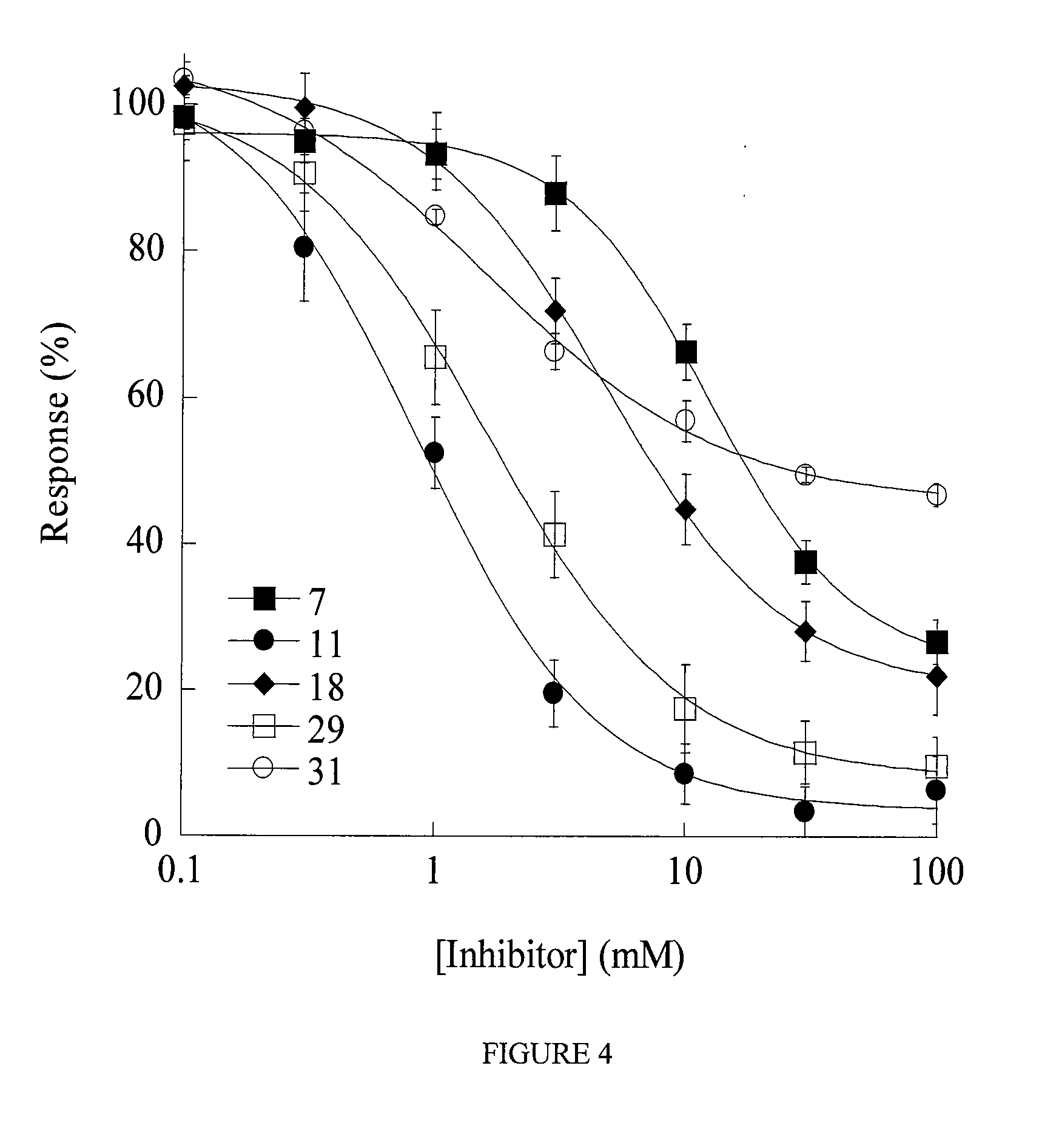Pipemidic acid derivative autotaxin inhibitors
a technology of autotaxin inhibitors and pipemidic acid, which is applied in the field of pipemidic acid derivative autotaxin inhibitors, can solve the problems of inability to actually achieve such a result, inability to reliably and highly effective autotaxin inactivators, and inability to detect and treat cancer at certain levels. achieve the effect of reducing the conversion of lpc to lpa, and being readily availabl
- Summary
- Abstract
- Description
- Claims
- Application Information
AI Technical Summary
Benefits of technology
Problems solved by technology
Method used
Image
Examples
example 1
[0031]Lead Compound A from above.
example 2
2-(4-{[(4-dimethylaminonapthylphenyl)amino]carbonothioyl}-1-piperazinyl)-8-ethyl-5-oxo-5,8-dihydropyrido[2,3-d]pyrimidine-6-carboxylic acid (2)
[0032]Pipemidic acid (25 mg, 0.0824 mmol), 4-dimethylamino-1-napthylisothiocyanate (18.8 mg, 0.0824 mmol) and triethylamine (23 μL, 0.165 mmol) were used. Purification on silica yielded compound 2 in Table 1, below (23 mg, 53%). 1H NMR (300 MHz, CDCl3) δ 9.29 (s, 1H), 8.63 (s, 1H), 8.32-8.24 (m, 1H), 8.02-7.93 (m, 1H), 7.62-7.46 (m, 3H), 7.02 (d, J=7.95 Hz, 1H), 4.29 (q, J=6.90 Hz, 2H), 4.16-3.85 (m, 8H), 2.90 (s, 6H), 1.45 (t, J=7.08 Hz, 3H) ppm.
example 3
2-(4-{[(4-iodophenyl)amino]carbonothioyl}-1-piperazinyl)-8-ethyl-5-oxo-5,8-dihydropyrido[2,3-d]pyrimidine-6-carboxylic acid (3)
[0033]Pipemidic acid (25 mg, 0.0824 mmol), 4-iodophenyl isothiocyanate (21.5 mg, 0.0824 mmol) and triethylamine (23 μL, 0.165 mmol) were used. Purification on silica yielded compound 3 in Table 1, below (36 mg, 77%). 1H NMR (300 MHz, CDCl3) δ 9.32 (s, 1H), 8.66 (s, 1H), 7.66 (d, J=6.94 Hz, 1H), 7.37 (s, 1H), 7.27 (s, 1H), 7.00 (d, J=7.44 Hz, 1H), 4.33 (q, J=6.90 Hz, 2H), 4.21-3.99 (m, 8H), 1.49 (t, J=7.14 Hz, 3H) ppm.
PUM
| Property | Measurement | Unit |
|---|---|---|
| emission wavelength | aaaaa | aaaaa |
| excitation wavelength | aaaaa | aaaaa |
| molecular weight | aaaaa | aaaaa |
Abstract
Description
Claims
Application Information
 Login to View More
Login to View More - R&D
- Intellectual Property
- Life Sciences
- Materials
- Tech Scout
- Unparalleled Data Quality
- Higher Quality Content
- 60% Fewer Hallucinations
Browse by: Latest US Patents, China's latest patents, Technical Efficacy Thesaurus, Application Domain, Technology Topic, Popular Technical Reports.
© 2025 PatSnap. All rights reserved.Legal|Privacy policy|Modern Slavery Act Transparency Statement|Sitemap|About US| Contact US: help@patsnap.com



